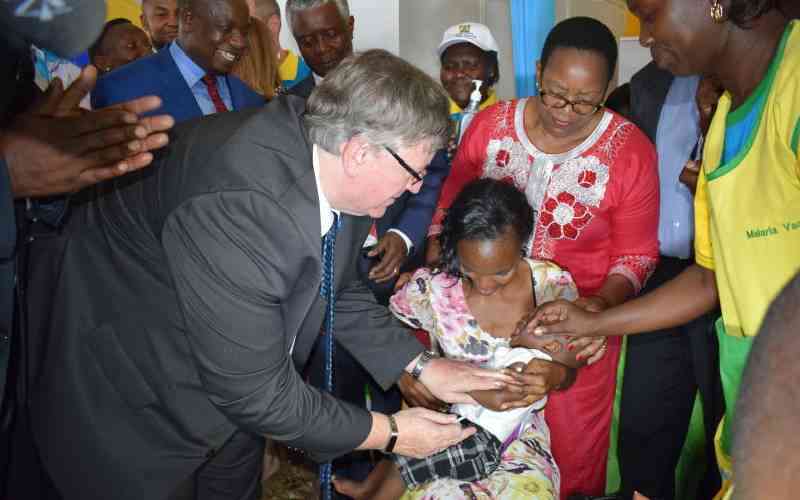Scientists have discovered two spider species which specifically target and feed on mosquitoes, a discovery which could help in the fight against malaria.
One type of jumping spiders is found only around Lake Victoria region where it is mostly seen on walls of occupied buildings, while the other is present only in Malaysia, often situated in bamboo culms.
The ‘mosquito specialists’ spiders’ (predators that specialise in killing mosquitoes), scientist say, feed preferentially on mosquitoes which could be critical in eliminating malaria-causing parasite.
The discovery was made following an extensive review undertaken by the International Centre of Insect Physiology and Ecology (ICIPE) and the University of Canterbury,New Zealand.
“Our research has shown that the manner in which the two spider species (E. culicivora and P. wanlessi) specialise on mosquitoes is strikingly different. The latter is particularly drawn to the malaria-transmitting mosquitoes whose guts are filled with blood,” explains Robert Jackson, the research leader.
“Like an eight-legged vampire, it seeks them out and destroys, or terminates, them. The other type prefers to feed on mosquito larvae lurking in pools of water inside bamboo,” he adds.
Prof Jackson notes that in their (spiders) own different ways, both species are highly specialised mosquito assassins.
“They both ignore any other insects that get in the way as they pursue their target victims — mosquitoes,” he says.
The discovery poses the question as to whether mosquito terminators can be exploited for the biological control of malaria vectors, especially in view of the predominant fear and loathing of spiders.
The study authors say the finding, which is published in the current issue of the Journal of Arachnology, focuses on what is now known about the biology of E. culicivora and P. wanlessi.
The World Health Organisation estimates that a child dies every minute from the disease globally.
In Kenya, in 2013 alone, the number of people carrying parasites, according to Kenya Medical Research Institute (KEMRI), was approximately 35 per cent in children aged below 5, and 56 per cent in those aged five-15.
Currently, the Government has intensified issuance of treated mosquito nets to locals to help control mosquito transmission level as part of interventions to control the disease.
The finding comes as the Government is shifting its fight against malaria from previously endemic regions of Nyanza and Coastal to the Rift Valley to tame rising cases of the disease there.
Recent studies indicate that threat of climate change could raise malaria risk in cool areas of Rift Valley while parts of Kisumu could also witness modest increase in transmission due to rising temperatures.
Stay informed. Subscribe to our newsletter
 The Standard Group Plc is a
multi-media organization with investments in media platforms spanning newspaper
print operations, television, radio broadcasting, digital and online services. The
Standard Group is recognized as a leading multi-media house in Kenya with a key
influence in matters of national and international interest.
The Standard Group Plc is a
multi-media organization with investments in media platforms spanning newspaper
print operations, television, radio broadcasting, digital and online services. The
Standard Group is recognized as a leading multi-media house in Kenya with a key
influence in matters of national and international interest.
 The Standard Group Plc is a
multi-media organization with investments in media platforms spanning newspaper
print operations, television, radio broadcasting, digital and online services. The
Standard Group is recognized as a leading multi-media house in Kenya with a key
influence in matters of national and international interest.
The Standard Group Plc is a
multi-media organization with investments in media platforms spanning newspaper
print operations, television, radio broadcasting, digital and online services. The
Standard Group is recognized as a leading multi-media house in Kenya with a key
influence in matters of national and international interest.









